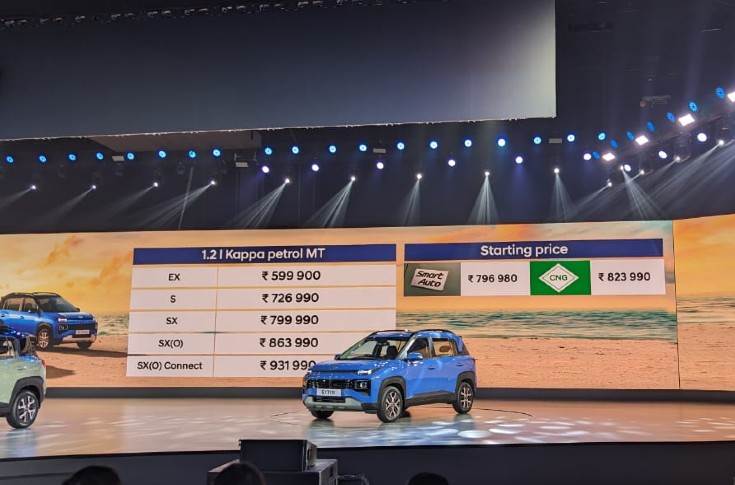Quantum Energy, an EV start-up specialising in the design, development, manufacturing, and sales of electric scooters, has announced its strategic tie-up with Bike Bazaar, an RBI-registered finance company that specialises in retail financing of Pre-Owned and New-vehicles. The agreement involves collaborating and powering a substantial number of Quantum Bziness Pro e-scooters. With a range of up… Continue reading Quantum Energy partners with Bike Bazaar for last mile delivery
Tag: Strategy
Quantum Energy partners with Bike Bazaar for last mile delivery
Quantum Energy, an EV start-up specialising in the design, development, manufacturing, and sales of electric scooters, has announced its strategic tie-up with Bike Bazaar, an RBI-registered finance company that specialises in retail financing of Pre-Owned and New-vehicles. The agreement involves collaborating and powering a substantial number of Quantum Bziness Pro e-scooters. With a range of up… Continue reading Quantum Energy partners with Bike Bazaar for last mile delivery
Hyundai Exter launched at aggressive price of Rs 5,99,900, garners 11,000 bookings
Hyundai Motor India (HMIL) has introduced its mini-SUV – Exter – launched at an introductory price of Rs 5,99,900, ex-showroom, India. The Exter is gunning for the Tata Punch, its sole rival in the sub-four-metre entry-SUV sub-segment, aiming to raise the benchmark with unique product attributes. The Exter is targeted at young, Gen-Z customers keen on a… Continue reading Hyundai Exter launched at aggressive price of Rs 5,99,900, garners 11,000 bookings
Hyundai India targets record 600,000-unit sales in FY24, aims to keep Tata Motors at bay
Hyundai Motor India (HMIL), which has entered the entry-level SUV market with its latest product – the Exter mini-SUV – is eyeing record volumes in FY2024. The company is bullish on demand to come the Exter’s way to gain incremental volumes, helping it breach 6 lakh units – a 6 percent year-on-year (YoY) growth over… Continue reading Hyundai India targets record 600,000-unit sales in FY24, aims to keep Tata Motors at bay
Yacht Industry Statistics: Market Size, Growth Rate, Competitor Share And Largest Region – By The Business Research Company
The Business Research Company’s global market reports are now updated with the latest market sizing information for the year 2023 and forecasted to 2032 LONDON, July 7, 2023 /PRNewswire/ — As per The Business Research Company, the global yacht market size will grow from $8.3 billion in 2022 to $8.9 billion in 2023 at a… Continue reading Yacht Industry Statistics: Market Size, Growth Rate, Competitor Share And Largest Region – By The Business Research Company
Trip.com Group Hosts Abu Dhabi Delegation to Foster Collaboration and Strengthen Destination Expansion
SHANGHAI, July 7, 2023 /PRNewswire/ — Trip.com Group hosted a delegation led by H.E. Saleh Al Geziry, the Director General for Tourism at the Department of Culture and Tourism – Abu Dhabi, on 6 July 2023. During their visit to the Group’s HQ, H.E. Saleh Al Geziry and his delegation were welcomed by Trip.com Group… Continue reading Trip.com Group Hosts Abu Dhabi Delegation to Foster Collaboration and Strengthen Destination Expansion
Zoomlion Signs Strategic Cooperation Agreement with EABC at the 3rd China-Africa Economic and Trade Expo, Further Promoting Joint Development with African Partners
CHANGSHA, China, July 7, 2023 /PRNewswire/ — Zoomlion Heavy Industry Science & Technology Co., Ltd. (“Zoomlion”; 1157.HK) deepened its commitment to Africa at the 3rd China-Africa Economic and Trade Expo held from June 29 to July 2 in Changsha, China. On July 3, Zoomlion Agriculture Machinery Co., Ltd. (“Zoomlion Agriculture”) signed a strategic cooperation agreement… Continue reading Zoomlion Signs Strategic Cooperation Agreement with EABC at the 3rd China-Africa Economic and Trade Expo, Further Promoting Joint Development with African Partners
Bitdefender to acquire Singapore-based cybersecurity firm HorangiThe company had raised a $20 million Series B round led by Provident Growth in 2020.
Global cybersecurity leader Bitdefender is acquiring Singapore-based Horangi Cyber Security as it seeks to meet the growing demand for advanced solutions and management of compliance and governance in multi-cloud environments. With this acquisition, Bitdefender will incorporate Horangi’s Cloud Infrastructure Entitlement Management (CIEM) and Cloud Security Posture Management (CSPM) capabilities into the Bitdefender GravityZone unified risk.… Continue reading Bitdefender to acquire Singapore-based cybersecurity firm HorangiThe company had raised a $20 million Series B round led by Provident Growth in 2020.
Alibaba, Tencent shares rise as investors bet China’s tech crackdown is over
Alibaba Group and Tencent shares rose in Hong Kong on Monday after China’s $984 million fine against the Jack Ma-founded Ant Group appeared to signal the end of a regulatory crackdown on the country’s technology sector. Following the penalty on Friday, the Alibaba affiliate announced a share buyback that values the fintech at a 75%… Continue reading Alibaba, Tencent shares rise as investors bet China’s tech crackdown is over
Yacht Industry Statistics: Market Size, Growth Rate, Competitor Share And Largest Region – By The Business Research Company
The Business Research Company’s global market reports are now updated with the latest market sizing information for the year 2023 and forecasted to 2032 LONDON, July 7, 2023 /PRNewswire/ — As per The Business Research Company, the global yacht market size will grow from $8.3 billion in 2022 to $8.9 billion in 2023 at a… Continue reading Yacht Industry Statistics: Market Size, Growth Rate, Competitor Share And Largest Region – By The Business Research Company
